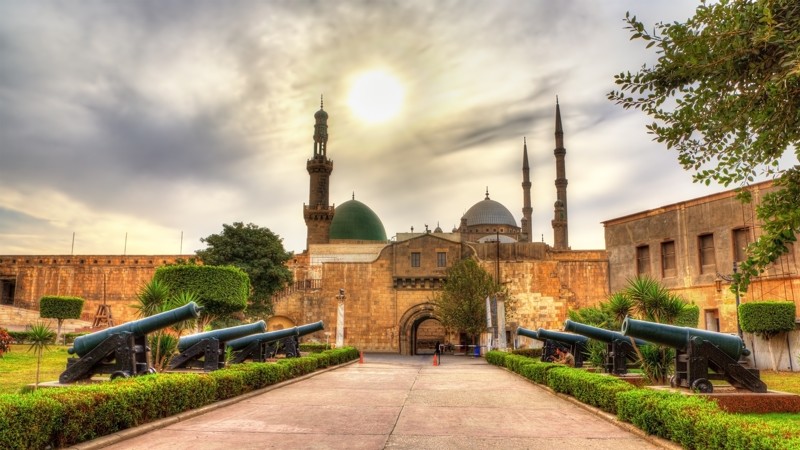Embarking on a day tour encompassing the Citadel, Old Cairo, and the revered Ben Ezra Synagogue is an expedition through time and faith. Offering a tapestry of inspiration woven from the threads of history, culture, and the human spirit. Enjoy Day Tour to Citadel, Old Cairo & Ben Ezra Synagogue.
INTRODUCTION: A JOURNEY THROUGH CAIRO’S RICH HERITAGE
The Significance of Cairo’s Cultural Landmarks
Cairo, the capital of Egypt, is a city steeped in history, where ancient and medieval cultures converge. Among its most significant landmarks are the Cairo Citadel, Old Cairo, and the Ben Ezra Synagogue. These sites not only reflect the architectural and cultural achievements of their respective eras but also provide insight into the diverse religious and social fabric of Egyptian society. This exploration of Cairo’s cultural heritage offers a glimpse into the city’s rich past and its enduring legacy.
THE CAIRO CITADEL: A FORTRESS OF ISLAMIC HISTORY
Historical Background
The Cairo Citadel, also known as the Citadel of Saladin, was constructed between 1176 and 1183 CE under the reign of Saladin, the first Sultan of Egypt and Syria. Built on the Mokattam Hills, the Citadel served as a military fortress and the seat of government for nearly 700 years. Its strategic location provided a commanding view of Cairo and the surrounding area, making it an essential defensive structure.
Architectural Features
The Citadel is a remarkable example of medieval Islamic architecture, featuring a blend of military and religious structures. The most prominent feature is the Muhammad Ali Mosque, built between 1830 and 1848. This mosque, with its grand dome and twin minarets, is often referred to as the “Alabaster Mosque” due to its extensive use of alabaster in its construction. The Citadel also includes several palaces, museums, and military structures that reflect the architectural styles of different periods.
The Role of the Citadel in Egyptian History
Throughout its history, the Citadel has played a crucial role in the political and military affairs of Egypt. It served as the residence of various rulers, including the Mamluks and the Ottomans. The Citadel witnessed significant events, including battles, political intrigues, and the establishment of new dynasties. Today, it stands as a symbol of Egypt’s rich Islamic heritage and a testament to the country’s historical significance.
OLD CAIRO: A HISTORICAL TREASURE
Historical Background
Old Cairo, also known as Islamic Cairo, is a historic district that dates back to the founding of the city in 969 CE. It is home to some of the oldest and most significant Islamic monuments in Egypt, reflecting the rich cultural and architectural heritage of the Islamic period. The area is characterized by its narrow streets, ancient mosques, and vibrant markets, making it a living testament to Cairo’s historical significance.
Architectural Heritage
Old Cairo is renowned for its stunning Islamic architecture, with numerous mosques, madrasas, and palaces that showcase various architectural styles. Notable structures include the Mosque of Ibn Tulun, one of the oldest mosques in Cairo, and the Al-Azhar Mosque, a center of Islamic learning. The area also features the historic Khan El Khalili bazaar, a bustling market that has been a hub of trade and commerce for centuries. The intricate designs, decorative elements, and historical significance of these structures make Old Cairo a UNESCO World Heritage site.
Cultural Significance
Old Cairo is not only a historical site but also a vibrant cultural center. The area is home to a diverse population, and its streets are filled with the sounds of merchants, artisans, and street performers. The district hosts various cultural events, festivals, and exhibitions that celebrate Egypt’s rich heritage. Visitors to Old Cairo can immerse themselves in the local culture, exploring traditional crafts, sampling local cuisine, and engaging with the community.
Preservation Efforts
Preserving the historical and cultural significance of Old Cairo is essential for maintaining its identity. Ongoing restoration projects aim to protect its architectural heritage and enhance the visitor experience. The Egyptian government, along with local organizations, is committed to safeguarding the district’s historical sites while promoting sustainable tourism. These efforts ensure that future generations can appreciate the rich tapestry of history that Old Cairo represents.
BEN EZRA SYNAGOGUE: A SYMBOL OF EGYPT’S JEWISH HERITAGE
Historical Background
The Ben Ezra Synagogue, located in Old Cairo, is one of the oldest synagogues in Egypt, with roots dating back to the 9th century. It is situated near the site of the ancient Jewish community in Cairo, which thrived during the medieval period. The synagogue is named after Rabbi Abraham Ben Ezra, a prominent Jewish scholar and philosopher who lived in the 12th century.
Architectural Features
The Ben Ezra Synagogue is notable for its unique architectural style, which reflects a blend of Islamic and Jewish design elements. The interior features beautiful wooden ceilings, intricate carvings, and a stunning ark that houses the Torah scrolls. The synagogue’s courtyard is adorned with palm trees and offers a serene atmosphere for prayer and reflection. The building has undergone several renovations over the years, preserving its historical significance and architectural beauty.
Cultural and Religious Significance
The Ben Ezra Synagogue serves as a vital center for the Jewish community in Egypt, providing a place of worship and cultural gatherings. It is a symbol of the rich Jewish heritage in Egypt, which dates back to ancient times. The synagogue is also a site of pilgrimage for Jews from around the world, who come to pay their respects and connect with their ancestral roots.
Preservation and Community Engagement
Efforts to preserve the Ben Ezra Synagogue are essential for maintaining its historical and cultural significance. The synagogue is part of a larger initiative to protect and promote Egypt’s Jewish heritage, which has faced challenges over the years. Community engagement and educational programs aim to raise awareness about the contributions of the Jewish community to Egypt’s history and culture.
THE INTERCONNECTION OF THE EGYPTIAN MUSEUM, CAIRO CITADEL, AND BEN EZRA SYNAGOGUE
A Shared Narrative of Egyptian History
The Egyptian Museum, the Cairo Citadel, and the Ben Ezra Synagogue are interconnected in their representation of Egypt’s rich history. The Egyptian Museum serves as a monumental testament to the achievements of ancient Egyptian civilization, while the Citadel provides insight into the Islamic period of Egypt’s history. The Ben Ezra Synagogue reflects the enduring presence of Jewish culture in Egypt, highlighting the country’s diverse religious heritage. Together, they offer visitors a holistic understanding of the nation’s past, emphasizing the continuity and transformation of its cultural identity.
Tourism and Economic Impact
All three sites play a significant role in Egypt’s tourism industry, attracting millions of visitors each year. The economic impact of these sites is substantial, providing employment opportunities and supporting local businesses. The collaboration between the Egyptian Museum, the Citadel, and the Ben Ezra Synagogue enhances the overall visitor experience, encouraging tourists to explore the rich history and culture of Egypt in a meaningful way.
Promoting Cultural Heritage
The Egyptian Museum, the Cairo Citadel, and the Ben Ezra Synagogue are vital in promoting Egypt’s cultural heritage on a global scale. By showcasing the achievements of ancient Egyptians and the richness of their civilization, these institutions contribute to a greater understanding of Egypt’s historical significance. The preservation and interpretation of these cultural treasures are essential for fostering a sense of pride among Egyptians and promoting cultural exchange with the international community.
CHALLENGES FACING EGYPT’S CULTURAL INSTITUTIONS
Addressing Modern Challenges
The Egyptian Museum, the Cairo Citadel, and the Ben Ezra Synagogue face modern challenges, including urbanization, environmental degradation, and the impact of tourism. The influx of visitors can strain resources and infrastructure, necessitating careful management to ensure the preservation of these historical sites. Additionally, climate change poses risks to the structural integrity of the Citadel and the artifacts housed in the museum.
The Role of Government and NGOs
The Egyptian government, along with non-governmental organizations (NGOs), plays a crucial role in addressing these challenges. Initiatives aimed at enhancing visitor management, improving conservation techniques, and promoting sustainable tourism are essential for safeguarding Egypt’s cultural heritage. Collaborative efforts between government agencies, local communities, and international organizations can help ensure the long-term preservation of these invaluable sites.
CONCLUSION: A TAPESTRY OF EGYPTIAN HISTORY
The Egyptian Museum, the Cairo Citadel, and the Ben Ezra Synagogue collectively represent the rich and diverse history of Egypt. Each site offers a unique glimpse into the past, showcasing the achievements of ancient civilizations and the enduring cultural heritage of the Egyptian people. As these historical treasures continue to inspire and educate, they remind us of the importance of preserving our shared history for future generations. Through ongoing efforts in conservation, education, and cultural exchange, the legacy of Egypt’s remarkable past will endure, enriching the lives of all who encounter it. The interplay between these elements of Egyptian culture creates a vibrant tapestry that reflects the nation’s identity and its profound connection to its history.
In the amalgamation of these historical and spiritual landmarks. One finds not just relics of the past, but guiding lights for the present and the future. Let the Citadel’s strength, Old Cairo’s diversity, and the Ben Ezra Synagogue’s resilience echo within you. Encouraging the pursuit of inner fortitude, the celebration of diversity, and the unwavering belief that the human spirit. Regardless of time or trials, has the power to overcome, unite, and thrive


